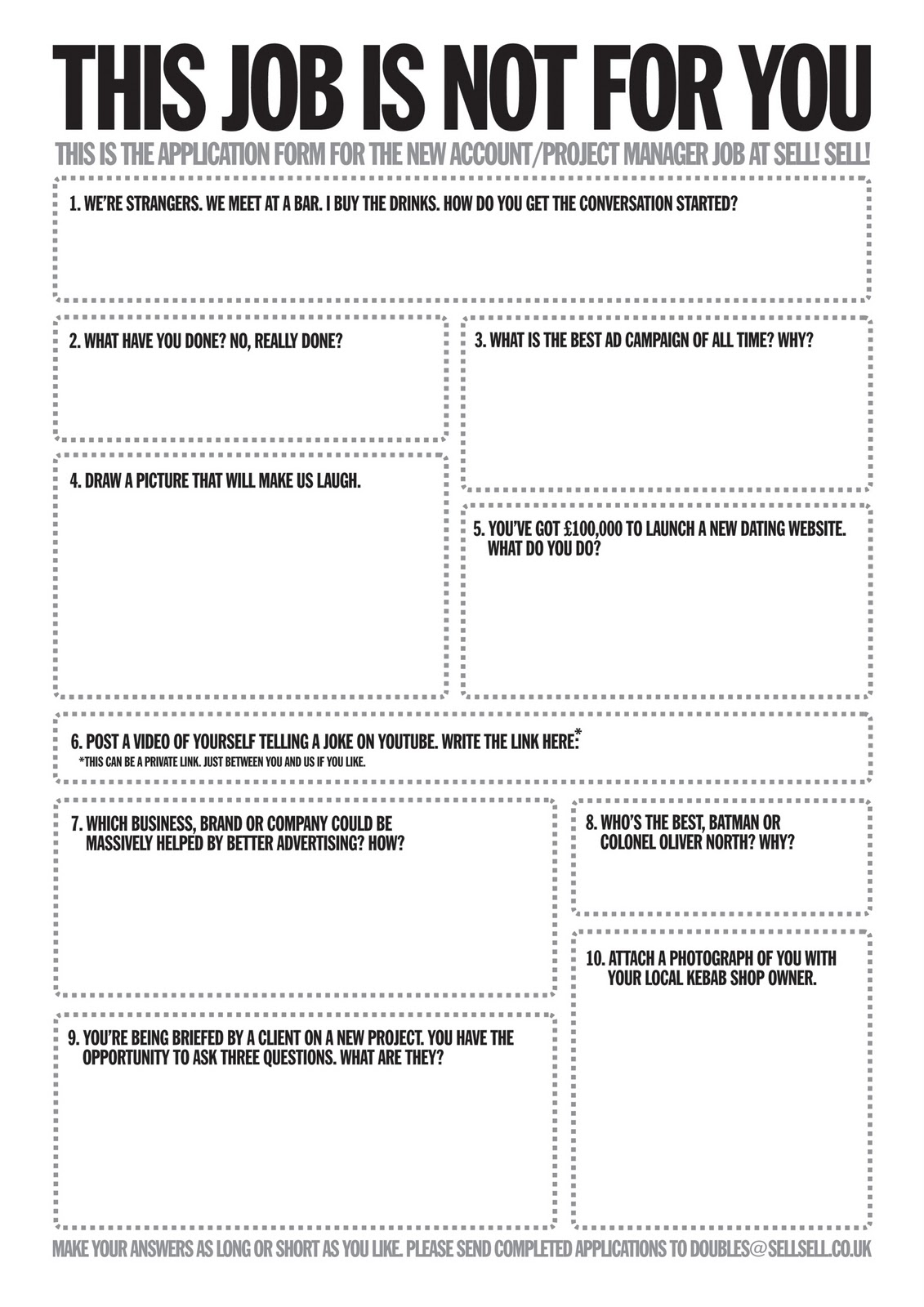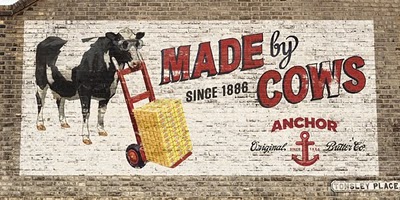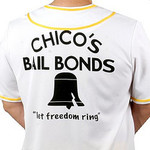This Job is Not For You
Came across yet another one of those 'offbeat and quirky job adverts/application processes' yesterday, this one from the folks at UK Ad Agency SELL!SELL!
Titled 'This Job is Not For You', the application form for the position, a junior level role in account/project management, asks candidates to answer questions like, 'Who's the best, Batman or Colonel Oliver North? Why?', and asks them to 'Post a video of yourself telling a joke on YouTube and share the link (can be private) here'.
The application form is below, and is also posted here.
These kinds of unusual application processes and job descriptions are starting to get more common, especially in creative fields like advertising, design, or even marketing; and I suppose really are not all that newsworthy anymore. But what I liked about this advertisement and application process is its explicit focus on why candidates would not be right for the job and how it focuses prospective applicants that were not going to be a good fit for the position to really challenge themselves to consider self-screening out.
Most typical and boring job advertisements for similar roles across organizations read kind of the same; an Administrative Assistant position at Company 'A' reads exactly the same as a similar role at Company 'B'. But the myriad of other factors that would make a qualified candidate a better 'fit' at one firm versus the other are normally not even hinted at, much less explicitly communicated.
Sure, a phone screen or in-person interview might shed light on these culture and style issues, and be reasonably effective at weeding out candidates that are not a good match culturally for the organization, but the unusual method of communication and atypical format of the job application like the one above from Sell!Sell! would provide an efficient pre-screening filter for applicants.
I know what you are thinking, these kinds of crazy application processes and offbeat blog postings that encourage candidates not to apply might work for a boutique, creative ad agency, but for my staid and traditional firm they would never fly. I need to roll out the fully approved and vetted (and incredibly boring) job description to my online ad, and make sure I require the same resume, cover letter, and list of references from every applicant, (who all have been well-coached to not submit anything at all 'unsafe' or potentially interesting, lest they stand out from the pack too much).
The end result, often, is a stack of barely distinguishable candidate packages that don't do all that much to offer any insight to the candidate's likelihood to be a good match to your organizational culture.
Unless of course your 'culture' is centered on plainness and looking like every other competitor, then almost all in your pack of candidates will seem like a fit.
Happy Weekend!
Note - I know the application form above asks for videos, pictures, etc.; the kind of things that at least in the US can get you into trouble, I am not advocating that companies do anything that runs afoul of laws and regulations around EEO. So there.

 Steve
Steve




